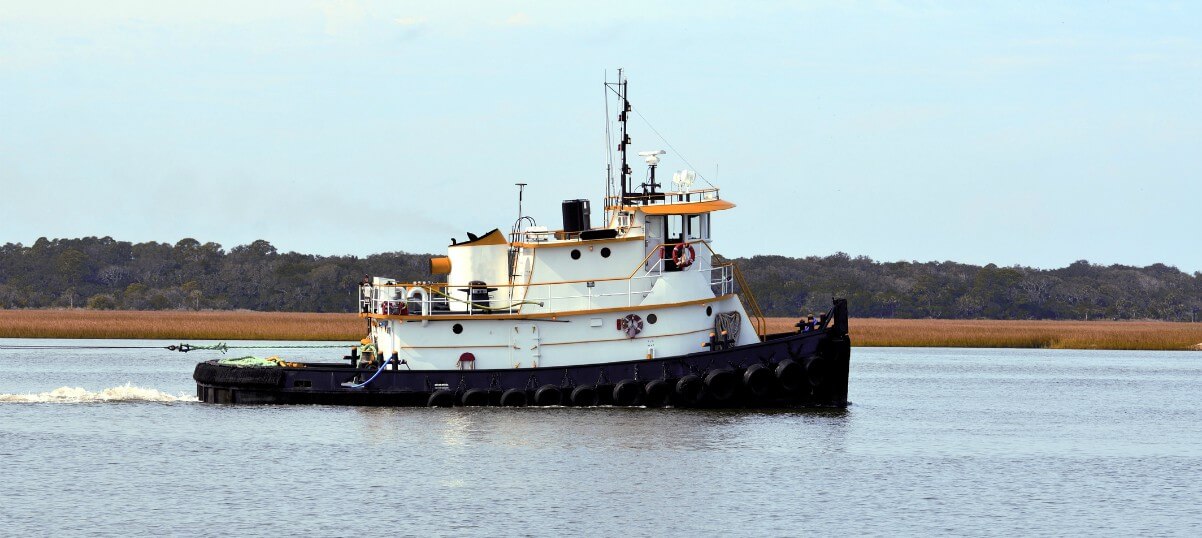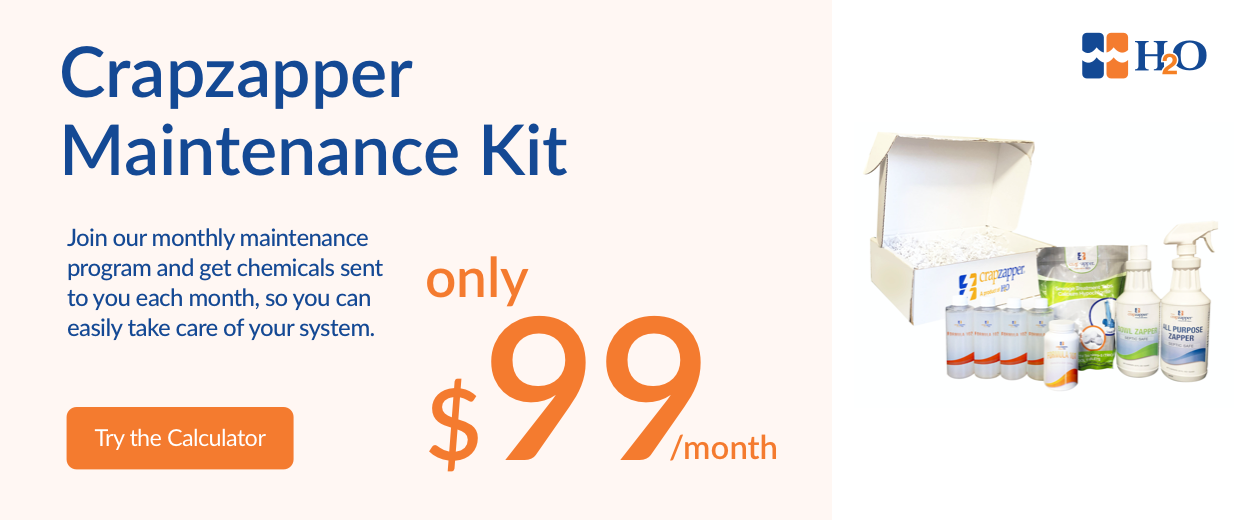
When you’re looking for ways to make your time aboard your vessel as efficient and enjoyable as possible along with ensuring you are compliant with regulations set forth by International Marine Organization (IMO) and United States Coast Guard (USCG) , it’s a good idea to take a quick look at the status of your marine sanitation device.
Marine sanitation devices are installed pieces of equipment on board your vessel that are designed to receive, treat, and discharge sewage safely. They’re important for making your multiday experience on water possible, they’re important for making your quality of life much better while at sea, and they help keep the water around your vessel clean for all to enjoy.
However, your marine sanitation device needs to be working well in order to provide those benefits. If you’re in charge of making sure your vessel runs smoothly, knowing how to maintain your sanitation system is crucial. This includes knowing when you can fix issues yourself, and when it’s time to call in the professionals for a replacement or a repair.
Let’s discuss the ways to know when it’s time to get a new marine sanitation device for your boat.
The Goal: What’s a Smoothly Running Marine Sanitation Device?
A well-working marine sanitation device is one that’s running as it’s supposed to! This means that you’re not overloading the system with a greater number of people creating waste for the system to process and you’re not introducing waste that the system can’t handle. A smoothly running marine sanitation device is one that’s being treated with the right chemicals and is never overloaded.
Why is loading your marine sanitation device correctly so important? Think about it this way: A marine sanitation device should operate at a slow boil; you don’t want it to bubble over!
Overloading, or surging, the system with too much waste too quickly can cause unpleasant side effects, including strong foul odor that would make you gag. Treating sewage takes time for the magic to happen. If you undersize it, you will most likely encounter problems.
Let’s start at the beginning of your marine sanitation system’s process. New waste is introduced into an aeration chamber, where the waste is oxygenated by your device’s blower. This creates a helpful environment for special “good” bacteria to thrive in. These bacteria help put the waste through a cycling aerobic, or oxygen-enabled, process starting in the aeration chamber, and continuing through the clarification chamber. After getting treated by bacteria in the aeration chamber and decreasing waste concentration and increasing clarity through the clarification chamber, the cleaned water will be routed to the chlorine contact chamber, dosed with chlorine, and converted into a safer material which is discharged into the water.
When a marine sanitation device starts to run poorly, large backup stacks of heavy solids and sludge can be created in the different tanks and pipes that make up the system. The functional bacteria and airflow can’t get through all of that hard-packed debris. Because of this, your system gets blocked. Your device gets surged. The waste can’t cycle through the system—which means that it doesn’t get exposed to oxygen or bacteria.
The sewage, then, can’t get treated. More than this, the overload will start to put pressure on the more delicate parts of your marine sanitation device, causing them to strain and even break. This leaves you with growing amounts of unsafe, bad-smelling sludge—and a sanitation system that can’t do anything about it!
For your health and happiness—as well as the safety of everyone on board your vessel—it’s important that this does not happen.
5 Signs It’s Time to Replace Your Marine Sanitation Device
Sometimes, it’s possible to fix your device or get it repaired. Other times, it’s not, and that’s expected. New upgrades and features are being invented and rolled out in products each day to make marine sanitation devices safer, more efficient, and more durable, so a replacement isn’t always a bad thing.
To figure out whether your marine sanitation device needs a timely replacement or repair, look to see whether your system is exhibiting any of the following conditions:
1. The inner and outer walls of your device are corroding.
Remember when we noted above that one major reason marine sanitation devices fail is because they’re dosed with improper chemicals? The inner coating of many of the chambers in a sanitation system is made of a substance called coal tar. Harsh, improperly used chemicals (like bleach) can eat away the coating and expose unprotected metal to chemicals, sludge, and other environmental factors. This will corrode the metal, and the damage will domino through the system: The corrosion will spread from the smallest uncovered point all the way through your marine sanitation device.
(The same harsh chemicals that can corrode the walls of your tank often kill the bacteria that treat your sewage, so dosing with the proper chemicals is important!)
2. The system’s components are failing, and service costs warrant a replacement.
If you’ve been overloading your system for a while, the pressure caused by the sludge stacking and backup might have damaged parts of your blower, your valves, or other parts of your marine sanitation device.
By the time you’ve repaired, serviced, or replaced your unit; and had the entire system inspected; you’ve likely spent as much money as a replacement model would cost you anyway! In these situations, it’s probably best to just replace your marine sanitation device.
3. You have outgrown your system.
Every marine sanitation device is rated for a certain number of people. That number is determined by the amount of load your system can comfortably take, divided by the amount of waste one person is expected to produce each day.
Perhaps you’re in a situation in which you’ve taken a new project that requires more people on board. It’s incredibly important that you don’t expect a smaller marine sanitation device to grow with you on its own!
Example: You are using our 76-gallon MSD to manage waste for seven crew members. But let's say you add five more people to your boat for a total of 12 crew members; now your MSD can’t handle the amount of waste for the entire crew, and you will run into serious issues.
Bottom line: As we stressed above, you can’t overload your system. If your marine sanitation device is rated for six people per day, and you’re counting closer to 20, it’s definitely time to get a new device. Otherwise, you’re just asking for expensive repairs, fines, and an eventual replacement later. It’s better to save yourself the headache and replace it early on.
4. Your system is not meeting regulations.
Aside from the comfort of everyone on board your ship, one of the main reasons to make sure your marine sanitation device is working properly is to ensure that your discharge is safe—and that it meets IMO and/or USCG standards.
If your marine sanitation device is outdated, broken, overstressed, or overloaded, it’s likely not treating all of your sewage up to the marine regulatory standards. This means that the waste is getting dumped in the water with problematic levels of toxins, chemicals, or other hazardous materials that aren’t great for the local environment. If the regulatory authority notices this (which it will), you’ll be asked to repair or replace your system, anyway, in addition to paying a hefty penalty fee. Save yourself that fee and proactively upgrade your system!
5. It’s time for an upgrade (plastic to carbon, carbon to stainless steel, and so on).
Finally, you’ll know it’s time for a replacement if your lower-grade marine sanitation device has seen better days. For example, a plastic device might have seemed like a good idea initially, but after years of hot-cold cycles, it’s likely warped and ready to go.
It’s always a good idea to go for an upgrade rather than trying to overuse a strained and broken system, or trying to force a makeshift solution yourself. You can’t really modify your marine sanitation device in any way after it’s certified. DIYs aren’t an option, even if you think there’s a way you can hack an upgrade!
Therefore, when it’s time to get a more efficient, more durable, or simply better system, it’s a good idea to bite the bullet and replace your device, instead of trying to hack something together that won’t be compliant and likely won’t work. Metal devices tend to stand the test of time better, making them a good investment for the long haul.
Examine Your MSD and Consider a Replacement Today
If you want your boat to run well and promote the cleanliness you need, you need to find a marine sanitation device company that you can trust. A smoothly running sanitation system might take some work and an initial investment, but it can make your life on your vessel much easier (and more coast guard compliant). Don’t delay in choosing a replacement or upgrade for your marine sanitation device. Contact H2O., a manufacturer of time-tested marine sanitation devices, to request pricing on a replacement unit today.

